Jinghua Zhang
Partitioned Memory Storage Inspired Few-Shot Class-Incremental learning
Apr 29, 2025Abstract:Current mainstream deep learning techniques exhibit an over-reliance on extensive training data and a lack of adaptability to the dynamic world, marking a considerable disparity from human intelligence. To bridge this gap, Few-Shot Class-Incremental Learning (FSCIL) has emerged, focusing on continuous learning of new categories with limited samples without forgetting old knowledge. Existing FSCIL studies typically use a single model to learn knowledge across all sessions, inevitably leading to the stability-plasticity dilemma. Unlike machines, humans store varied knowledge in different cerebral cortices. Inspired by this characteristic, our paper aims to develop a method that learns independent models for each session. It can inherently prevent catastrophic forgetting. During the testing stage, our method integrates Uncertainty Quantification (UQ) for model deployment. Our method provides a fresh viewpoint for FSCIL and demonstrates the state-of-the-art performance on CIFAR-100 and mini-ImageNet datasets.
Few-shot Class-incremental Learning: A Survey
Aug 13, 2023



Abstract:Few-shot Class-Incremental Learning (FSCIL) presents a unique challenge in machine learning, as it necessitates the continuous learning of new classes from sparse labeled training samples without forgetting previous knowledge. While this field has seen recent progress, it remains an active area of exploration. This paper aims to provide a comprehensive and systematic review of FSCIL. In our in-depth examination, we delve into various facets of FSCIL, encompassing the problem definition, the discussion of primary challenges of unreliable empirical risk minimization and the stability-plasticity dilemma, general schemes, and relevant problems of incremental learning and few-shot learning. Besides, we offer an overview of benchmark datasets and evaluation metrics. Furthermore, we introduce the classification methods in FSCIL from data-based, structure-based, and optimization-based approaches and the object detection methods in FSCIL from anchor-free and anchor-based approaches. Beyond these, we illuminate several promising research directions within FSCIL that merit further investigation.
Few-shot Class-incremental Pill Recognition
Apr 24, 2023



Abstract:The automatic pill recognition system is of great significance in improving the efficiency of the hospital, helping people with visual impairment, and avoiding cross-infection. However, most existing pill recognition systems based on deep learning can merely perform pill classification on the learned pill categories with sufficient training data. In practice, the expensive cost of data annotation and the continuously increasing categories of new pills make it meaningful to develop a few-shot class-incremental pill recognition system. In this paper, we develop the first few-shot class-incremental pill recognition system, which adopts decoupled learning strategy of representations and classifiers. In learning representations, we propose the novel Center-Triplet loss function, which can promote intra-class compactness and inter-class separability. In learning classifiers, we propose a specialized pseudo pill image construction strategy to train the Graph Attention Network to obtain the adaptation model. Moreover, we construct two new pill image datasets for few-shot class-incremental learning. The experimental results show that our framework outperforms the state-of-the-art methods.
Deep Learning for Iris Recognition: A Review
Mar 15, 2023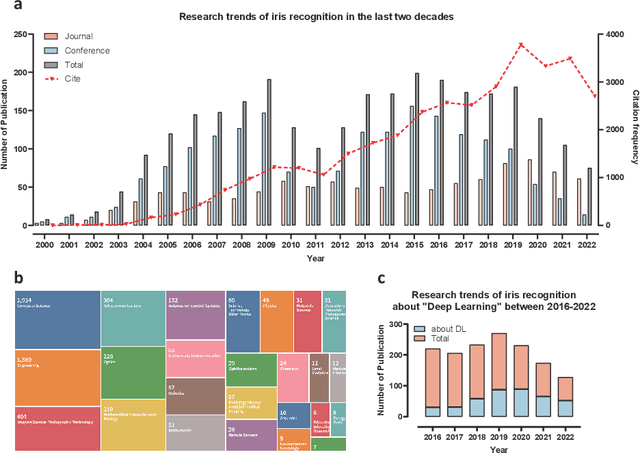


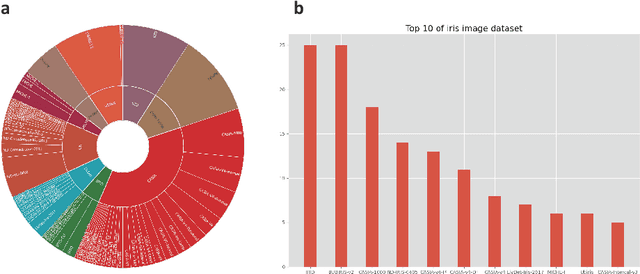
Abstract:Iris recognition is a secure biometric technology known for its stability and privacy. With no two irises being identical and little change throughout a person's lifetime, iris recognition is considered more reliable and less susceptible to external factors than other biometric recognition methods. Unlike traditional machine learning-based iris recognition methods, deep learning technology does not rely on feature engineering and boasts excellent performance. This paper collects 120 relevant papers to summarize the development of iris recognition based on deep learning. We first introduce the background of iris recognition and the motivation and contribution of this survey. Then, we present the common datasets widely used in iris recognition. After that, we summarize the key tasks involved in the process of iris recognition based on deep learning technology, including identification, segmentation, presentation attack detection, and localization. Finally, we discuss the challenges and potential development of iris recognition. This review provides a comprehensive sight of the research of iris recognition based on deep learning.
ACTIVE: A Deep Model for Sperm and Impurity Detection in Microscopic Videos
Jan 15, 2023



Abstract:The accurate detection of sperms and impurities is a very challenging task, facing problems such as the small size of targets, indefinite target morphologies, low contrast and resolution of the video, and similarity of sperms and impurities. So far, the detection of sperms and impurities still largely relies on the traditional image processing and detection techniques which only yield limited performance and often require manual intervention in the detection process, therefore unfavorably escalating the time cost and injecting the subjective bias into the analysis. Encouraged by the successes of deep learning methods in numerous object detection tasks, here we report a deep learning model based on Double Branch Feature Extraction Network (DBFEN) and Cross-conjugate Feature Pyramid Networks (CCFPN).DBFEN is designed to extract visual features from tiny objects with a double branch structure, and CCFPN is further introduced to fuse the features extracted by DBFEN to enhance the description of position and high-level semantic information. Our work is the pioneer of introducing deep learning approaches to the detection of sperms and impurities. Experiments show that the highest AP50 of the sperm and impurity detection is 91.13% and 59.64%, which lead its competitors by a substantial margin and establish new state-of-the-art results in this problem.
Artificial Neural Networks for Finger Vein Recognition: A Survey
Aug 29, 2022
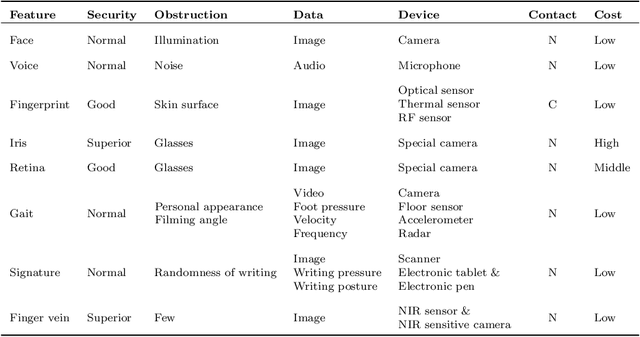

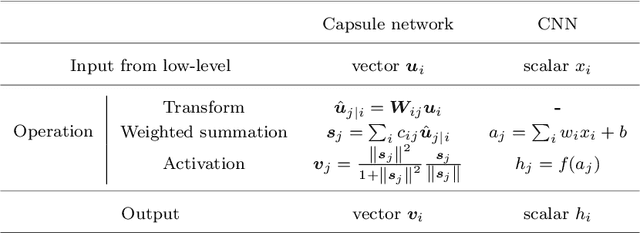
Abstract:Finger vein recognition is an emerging biometric recognition technology. Different from the other biometric features on the body surface, the venous vascular tissue of the fingers is buried deep inside the skin. Due to this advantage, finger vein recognition is highly stable and private. They are almost impossible to be stolen and difficult to interfere with by external conditions. Unlike the finger vein recognition methods based on traditional machine learning, the artificial neural network technique, especially deep learning, it without relying on feature engineering and have superior performance. To summarize the development of finger vein recognition based on artificial neural networks, this paper collects 149 related papers. First, we introduce the background of finger vein recognition and the motivation of this survey. Then, the development history of artificial neural networks and the representative networks on finger vein recognition tasks are introduced. The public datasets that are widely used in finger vein recognition are then described. After that, we summarize the related finger vein recognition tasks based on classical neural networks and deep neural networks, respectively. Finally, the challenges and potential development directions in finger vein recognition are discussed. To our best knowledge, this paper is the first comprehensive survey focusing on finger vein recognition based on artificial neural networks.
Deep Learning for Finger Vein Recognition: A Brief Survey of Recent Trend
Jul 05, 2022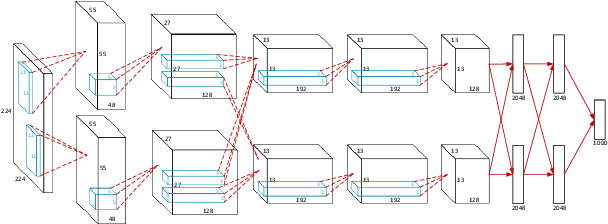



Abstract:Finger vein image recognition technology plays an important role in biometric recognition and has been successfully applied in many fields. Because veins are buried beneath the skin tissue, finger vein image recognition has an unparalleled advantage, which is not easily disturbed by external factors. This review summarizes 46 papers about deep learning for finger vein image recognition from 2017 to 2021. These papers are summarized according to the tasks of deep neural networks. Besides, we present the challenges and potential development directions of finger vein image recognition.
An application of Pixel Interval Down-sampling (PID) for dense tiny microorganism counting on environmental microorganism images
Apr 04, 2022

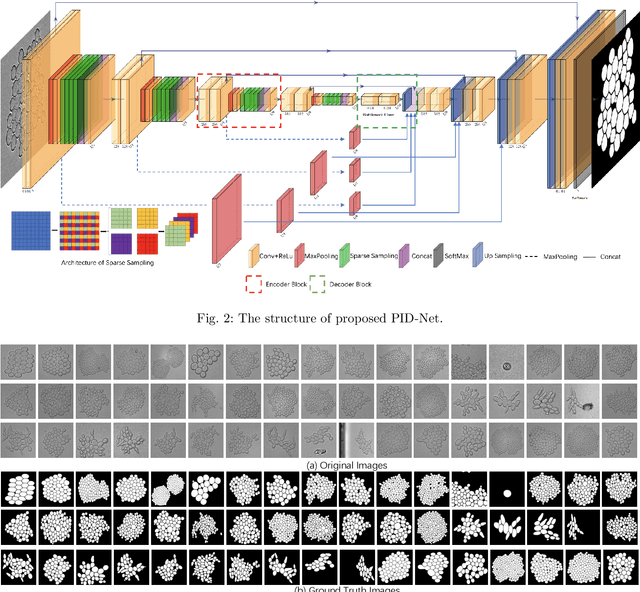
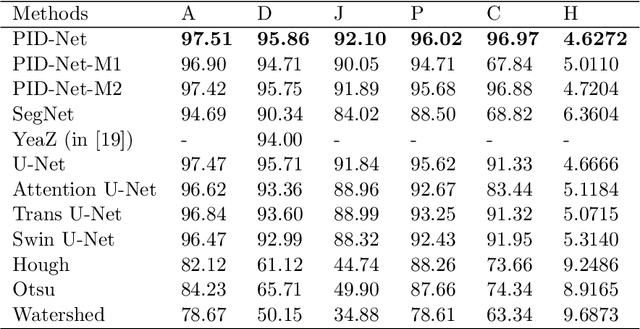
Abstract:This paper proposes a novel pixel interval down-sampling network (PID-Net) for dense tiny objects (yeast cells) counting tasks with higher accuracy. The PID-Net is an end-to-end CNN model with encoder to decoder architecture. The pixel interval down-sampling operations are concatenated with max-pooling operations to combine the sparse and dense features. It addresses the limitation of contour conglutination of dense objects while counting. Evaluation was done using classical segmentation metrics (Dice, Jaccard, Hausdorff distance) as well as counting metrics. Experimental result shows that the proposed PID-Net has the best performance and potential for dense tiny objects counting tasks, which achieves 96.97% counting accuracy on the dataset with 2448 yeast cell images. By comparing with the state-of-the-art approaches like Attention U-Net, Swin U-Net and Trans U-Net, the proposed PID-Net can segment the dense tiny objects with clearer boundaries and fewer incorrect debris, which shows the great potential of PID-Net in the task of accurate counting tasks.
A Comprehensive Survey with Quantitative Comparison of Image Analysis Methods for Microorganism Biovolume Measurements
Feb 18, 2022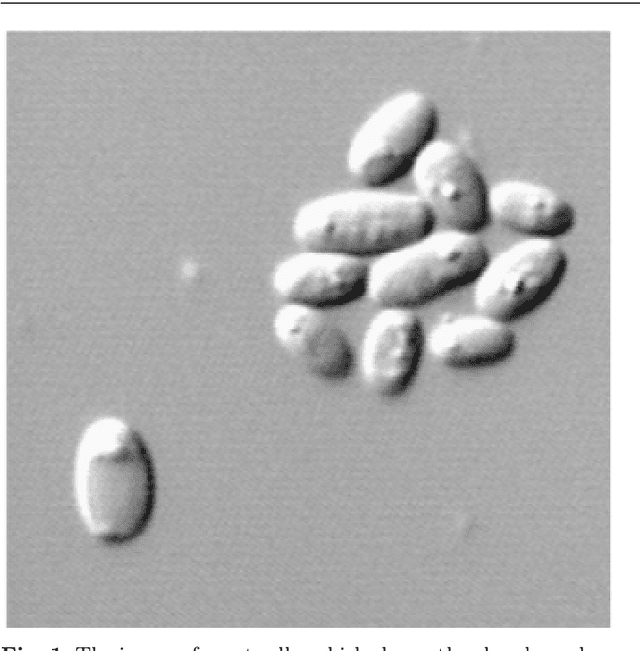

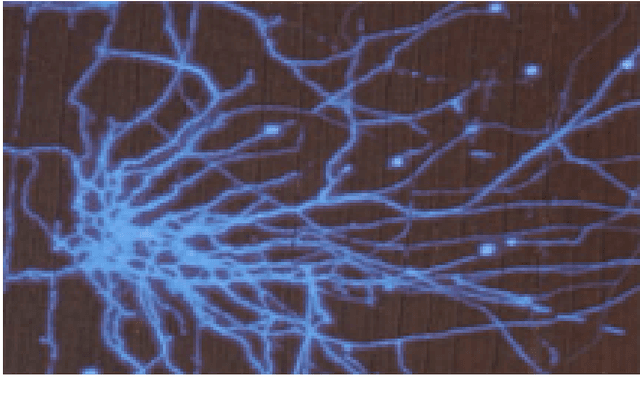
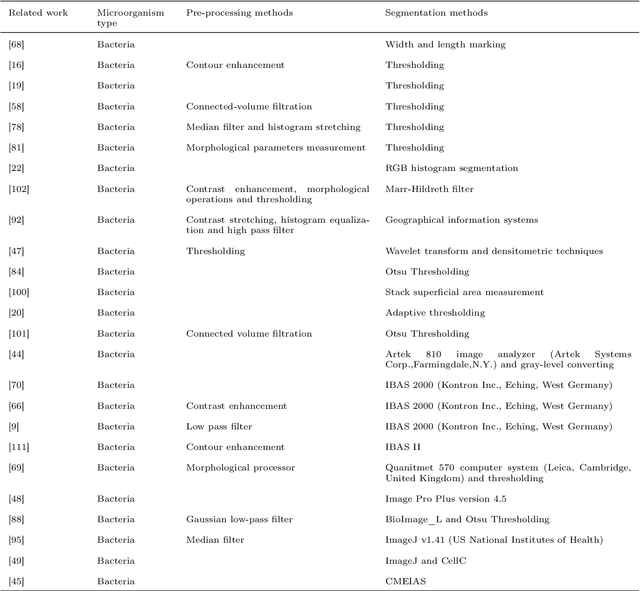
Abstract:With the acceleration of urbanization and living standards, microorganisms play increasingly important roles in industrial production, bio-technique, and food safety testing. Microorganism biovolume measurements are one of the essential parts of microbial analysis. However, traditional manual measurement methods are time-consuming and challenging to measure the characteristics precisely. With the development of digital image processing techniques, the characteristics of the microbial population can be detected and quantified. The changing trend can be adjusted in time and provided a basis for the improvement. The applications of the microorganism biovolume measurement method have developed since the 1980s. More than 60 articles are reviewed in this study, and the articles are grouped by digital image segmentation methods with periods. This study has high research significance and application value, which can be referred to microbial researchers to have a comprehensive understanding of microorganism biovolume measurements using digital image analysis methods and potential applications.
Applications of Artificial Neural Networks in Microorganism Image Analysis: A Comprehensive Review from Conventional Multilayer Perceptron to Popular Convolutional Neural Network and Potential Visual Transformer
Aug 01, 2021



Abstract:Microorganisms are widely distributed in the human daily living environment. They play an essential role in environmental pollution control, disease prevention and treatment, and food and drug production. The identification, counting, and detection are the basic steps for making full use of different microorganisms. However, the conventional analysis methods are expensive, laborious, and time-consuming. To overcome these limitations, artificial neural networks are applied for microorganism image analysis. We conduct this review to understand the development process of microorganism image analysis based on artificial neural networks. In this review, the background and motivation are introduced first. Then, the development of artificial neural networks and representative networks are introduced. After that, the papers related to microorganism image analysis based on classical and deep neural networks are reviewed from the perspectives of different tasks. In the end, the methodology analysis and potential direction are discussed.
 Add to Chrome
Add to Chrome Add to Firefox
Add to Firefox Add to Edge
Add to Edge